Do you have a question about the Lux Tools A-HS-20/41T-2in1 and is the answer not in the manual?
Provides information on compatible batteries and spare parts via a QR code.
User must read and understand instructions before first use. Hand over instructions with the device.
Read and follow all safety warnings and instructions to avoid electric shock, fire, or serious injury.
Keep work area clean, avoid explosive atmospheres, and ensure proper electrical connections.
Explains symbols for DANGER, WARNING, CAUTION, and NOTICE to indicate risks of injury or damage.
Stay alert, use PPE, prevent unintentional starting, maintain balance, and dress properly.
Use the correct tool, maintain it, and follow proper operating procedures for safe use.
Use correct battery packs, handle with care, avoid heat, moisture, and improper charging to prevent hazards.
Keep chargers dry, clean, check for damage, and supervise children during use.
Have your power tool serviced by a qualified repair person using identical replacement parts.
Follow specific safety guidelines for chain saw operation, including body positioning, grip, and PPE.
Understand kickback causes and implement preventative measures for safe operation.
Ensure work area is free of obstacles, avoid unstable surfaces, and maintain distance from power lines.
Cut only wood, hold securely, and maintain safe posture while trimming hedges.
Do not cut above shoulder height, maintain firm footing, and be aware of spring back from tensioned branches.
Avoid uncontrolled restarting, keep handles dry, hold tool firmly, and comply with regulations.
Avoid unapproved accessories, be aware of moving parts, and follow battery disposal/handling rules.
Vibrations can cause circulation problems. Seek medical help for numbness or pain.
Lists and describes all numbered components of the appliance for easy identification.
Lists all items included in the product packaging, such as drive units, rod, battery, and charger.
Warning about risk of injury from improperly mounted parts during installation.
Instructions for attaching the shoulder strap to the designated lug on the appliance.
Steps for fitting the drive unit onto the telescopic rod and securing it with a locking nut.
Detailed steps for assembling the saw rail and saw chain, including guard and fastening nut.
Instructions on how to tighten the tensioning screw to ensure the chain lies correctly on the saw rail.
Procedure for re-tensioning the saw chain after a maximum of 5 cuts during the initial run-in period.
How to check if the saw chain is correctly tensioned by ensuring it lies close to the saw rail and moves easily.
Procedure to check oil quantity in the tank and verify chain greasing by observing oil spray.
Steps for filling the saw chain oil tank, including environmental notice and checking oil level.
Safety warnings and instructions for charging the battery pack, including deep discharge prevention.
Information on how the charger indicates battery status and automatic switching to maintenance charge.
How to check the remaining battery capacity using the control lights.
Steps to loosen the locking lever, adjust rod length, and retighten the lever.
How to unlock and adjust the working position of the drive unit until it clicks into place.
Crucial safety checks including safety devices, part tightness, visual damage, and chain tension.
Instructions on how to firmly hold the product, use the shoulder strap, and operate the safety lock and on/off switch.
Recommends familiarization with sawing techniques and attending training sessions for safe operation.
Guidelines for maintaining proper posture, balance, and grip for safe sawing operations.
Instructions on how to search the work area, check the device, and hold it correctly for sawing.
Avoid contact of the saw rail with hard objects to prevent kickback and ensure safe working methods.
Emphasizes professional training and proper handling to avoid severe or fatal injuries.
Checks for safety lock, handles, parts presence, and chain tension before starting operation.
Describes pulling sawing technique, device support, and better control to avoid kickbacks.
Describes pushing sawing technique, potential for kickback, and user control.
Warns of danger in tree cutting and delimbing, requiring trained personnel and safe escape routes.
Take care near fences, switch off immediately if trimmings are caught, and mount blade guard.
Avoid noisy operation during quiet hours and check for nesting birds before cutting.
Remove battery and let device cool down before any maintenance or cleaning work.
Steps for cleaning the machine, including oiling the cutting tool.
Instructions for cleaning the oil guide groove of the saw rail and replacing the saw rail if necessary.
How to lift the saw rail tip and tighten the tensioning screw for proper chain tension.
Recommends professional sharpening to ensure correct angle and depth for the cutting chain.
Ensure no unauthorized persons gain access. Slip protection cover over cutting equipment. Store in a dry, ventilated place.
Remove chain oil from the device if not using it for a while, and store in a dry place.
Table to identify common faults like battery issues or device defects and their remedies.
Instructions on proper disposal of the appliance, batteries, and electronics, following waste disposal regulations.
Lists technical specifications for the pruning saw, including speed, rail length, cutting speed, and oil capacity.
Lists technical specifications for the hedge trimmer, including cutting length, branch diameter, and stroke rate.
Provides acoustic pressure and power levels, and vibration emission values for the tool.
Lists specifications for the battery charger and pack, including voltage, capacity, and charging time.
Warning against using old oil for greasing the saw chain to prevent damage to components.
Directs users to find information about suitable batteries and spare parts via a QR code.
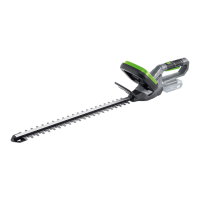
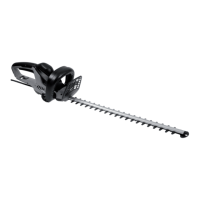
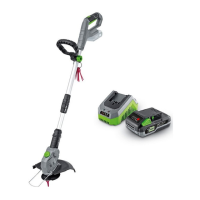
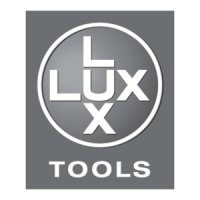
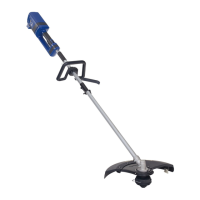
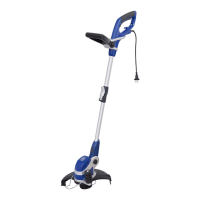

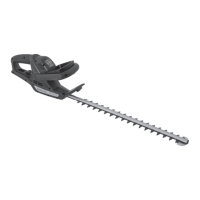
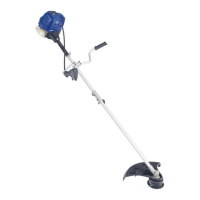
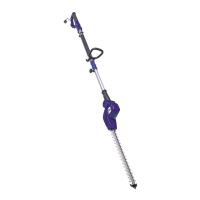

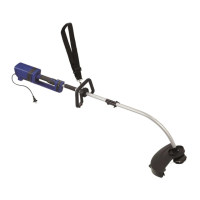
